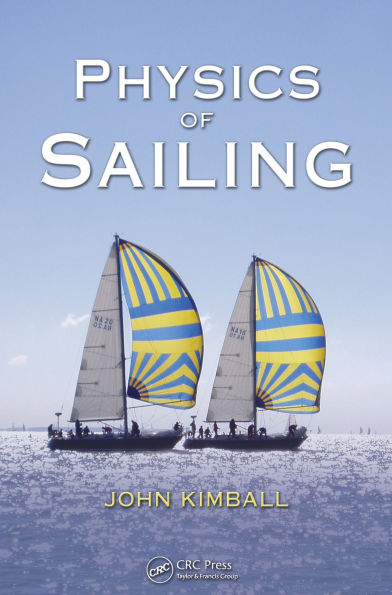Breaking down the complicated concepts of speed, acceleration, torque, fluid mechanics, and surface physics, Physics of Sailing provides a lively, easily accessible introduction to the basic science underlying the sport of sailing. It illustrates the many ways physics can be used to understand the principles of sailboat propulsion and how a scientific understanding of the boat, wind, and water can lead to more skillful sailing.
After a brief but insightful tour of the history of sailing, the book explores the physics involved in making faster sailing crafts for both upwind and downwind sailing, including Newton’s impact theory of fluid resistance and lift and drag phenomena. It compares possible sail shapes, presents measurements of hull smoothness, and describes wind turbulence, the nature of water waves, and the structure of wakes. Using the physics of optics, the author also explains the connection between water’s appearance and the wind. Along with a glossary of sailing terms, he includes many examples throughout to illustrate the concepts in practice.
Avoiding unnecessary formalisms, this book skillfully applies the principles of fluid mechanics to sailboat technology and the art of sailing. It should help you become a more knowledgeable sailor.
Breaking down the complicated concepts of speed, acceleration, torque, fluid mechanics, and surface physics, Physics of Sailing provides a lively, easily accessible introduction to the basic science underlying the sport of sailing. It illustrates the many ways physics can be used to understand the principles of sailboat propulsion and how a scientific understanding of the boat, wind, and water can lead to more skillful sailing.
After a brief but insightful tour of the history of sailing, the book explores the physics involved in making faster sailing crafts for both upwind and downwind sailing, including Newton’s impact theory of fluid resistance and lift and drag phenomena. It compares possible sail shapes, presents measurements of hull smoothness, and describes wind turbulence, the nature of water waves, and the structure of wakes. Using the physics of optics, the author also explains the connection between water’s appearance and the wind. Along with a glossary of sailing terms, he includes many examples throughout to illustrate the concepts in practice.
Avoiding unnecessary formalisms, this book skillfully applies the principles of fluid mechanics to sailboat technology and the art of sailing. It should help you become a more knowledgeable sailor.

Physics of Sailing
296
Physics of Sailing
296Related collections and offers

Product Details
| ISBN-13: | 9781040079416 |
|---|---|
| Publisher: | CRC Press |
| Publication date: | 12/22/2009 |
| Sold by: | Barnes & Noble |
| Format: | eBook |
| Pages: | 296 |
| File size: | 7 MB |
